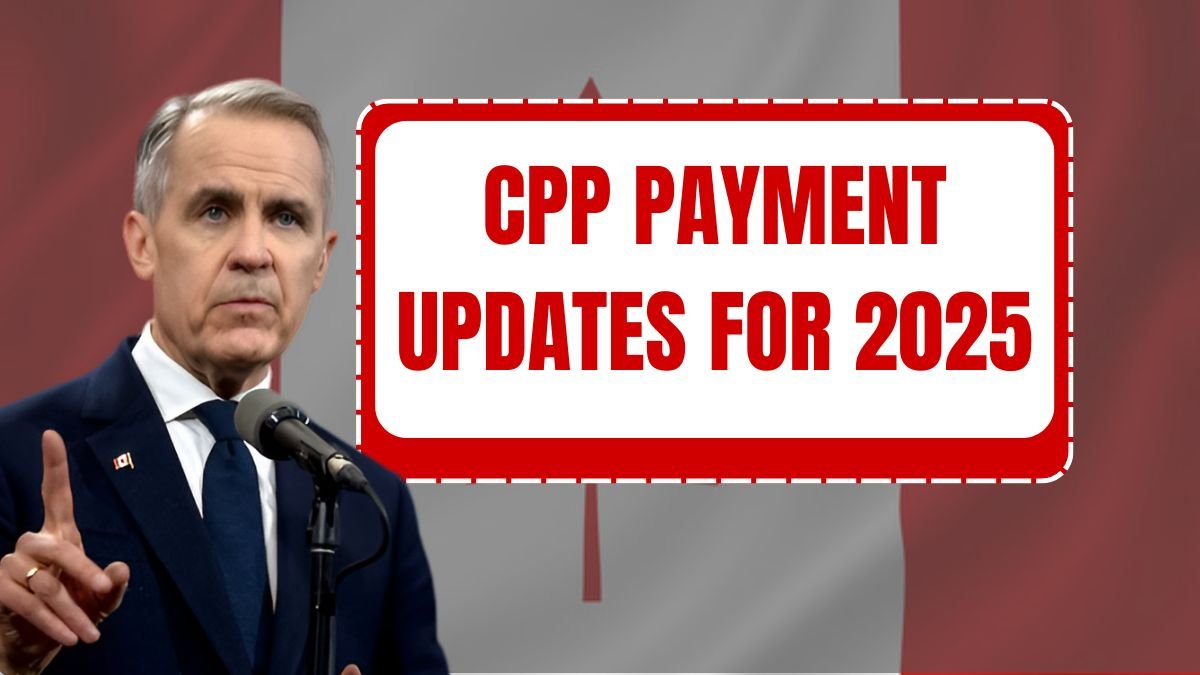Are you working in Canada and planning for your retirement? Then the new changes in the Canada Pension Plan (CPP) in 2025 are very important for you. These changes will not only affect your contributions, but will also have a direct impact on your future pension.
The government’s goal is to provide financial security to every Canadian citizen after retirement, especially those who earn more. Let’s understand in detail what changes have been made in the CPP, how it will affect, and what preparations you should make.
| Update | 2025 Details |
|---|---|
| Maximum Monthly Pension (Age 65) | $1,433 |
| Maximum Monthly Pension (Age 70) | $2,034 |
| Average Monthly Pension | $808.14 |
| Maximum Earnings for Base CPP (YMPE) | $71,300 |
| New Higher Earnings Level (YAMPE) | $81,200 |
| Employee/Employer Contribution Rate | 5.95% (up to $71,300) |
| Extra Rate (on $71,300–$81,200) | 4% (each) |
| Self-Employed Rate (Base) | 11.9% |
| Self-Employed Rate (Additional Tier) | 8% |
Why have the changes been made?
The CPP reform began in 2019 and this phase of 2025 is part of the same process. The government wants people to contribute a little more today, so that they can get a better pension tomorrow. These changes are especially beneficial for high-income earners, but every contributor will benefit in some way from it.
Pension amount: How much will you get?
Now let’s get straight to the figures. If you made the maximum CPP contributions during your working years, you could:
get $1,433 per month at age 65.
If you wait until age 70, that amount will increase to $2,034 per month. That’s up to 42% more pension for just 5 years!
But the reality is that most Canadians only get an average of $808.14 per month. This is because not everyone reaches the maximum pensionable earnings during their job.
Contributions: How much do you have to pay?
The other big aspect of the CPP change is the contribution structure. Now both employees and employers will have to contribute as follows:
- On income up to $71,300 – 5.95% (employee + 5.95% employer)
- On income between $71,300 to $81,200 – additional 4% (employee + 4% employer)
For self-employed:
Self-employed people will have to contribute both parts:
- Base CPP (up to $71,300) – 11.9%
- Additional YAMPE (up to $81,200) – 8%
Although this seems a little more burdensome, it will also result in a bigger pension at the time of your retirement.
Remaining CPP payment dates for 2025
CPP is paid every month and is usually on the third last banking day of the month. Below are the remaining payment dates for 2025:
| Month | Payment Date |
|---|---|
| May | May 28, 2025 |
| June | June 26, 2025 |
| July | July 29, 2025 |
| August | August 27, 2025 |
| September | September 25, 2025 |
| October | October 29, 2025 |
| November | November 26, 2025 |
| December | December 22, 2025 |
Tip: Make sure your bank account Direct Deposit information is up to date in “My Service Canada Account” to ensure you receive payments on time.
Available tools and calculators
Want to find out how much pension you’ll receive from CPP when you retire? The government has provided some useful tools:
- Log in to My Service Canada Account
- View Statement of Contributions
- Use the CPP Retirement Pension Calculator
- This calculator can help you determine when it’s best to take CPP.
Examples
- John (65 years old) He has always worked at the maximum income and made regular CPP contributions. He now receives a pension of $1,433 per month.
- Maria (60 years old) She is retiring early. But if you start taking CPP before 65, there is a 0.6% reduction every month. That means at age 60, they will get about $916 per month.
- Priya (45 years, high income group) Her annual income is $85,000. Now she is contributing under both YMPE and YAMPE, which is likely to give her a better CPP pension in the future.
Why is it important to plan for retirement?
Planning for retirement is like planting a tree. It takes hard work in the beginning, but when the fruits start coming with time, then its importance is understood.
The CPP changes of 2025 are a big step in this direction. These not only make the pension more stable and secure, but also give citizens the opportunity to be self-sufficient for a long time.
Conclusion
The CPP changes of 2025 give you a great opportunity to make your future better and secure. If you pay attention to your earnings and contributions now, you will have a strong financial base at the time of retirement.
FAQs
What is the CPP (Canada Pension Plan)?
The CPP is a government-run retirement pension plan that provides income to eligible Canadians once they retire, become disabled, or pass away (in the form of survivor benefits).
What major changes are coming to CPP payments in 2025?
In 2025, key updates include revised contribution rates, changes in pensionable earnings limits, and possible benefit adjustments tied to inflation and income levels.
Will CPP monthly payments increase in 2025?
Yes, CPP payments may increase due to annual indexing based on the Consumer Price Index (CPI). Additionally, changes in contribution amounts and income brackets could result in higher payouts for some.
Who will be affected by the 2025 CPP changes?
All contributors to the CPP, including employees, self-employed individuals, and retirees receiving payments, may be affected depending on their income and contribution history.
